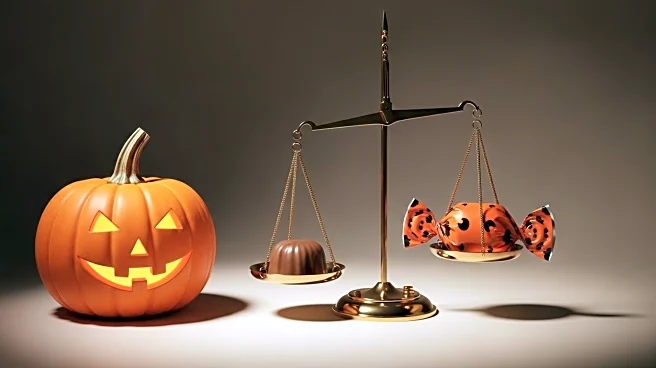What is the story about?
What's Happening?
Hershey has successfully defended against a lawsuit alleging that its Halloween-themed Reese's peanut butter candies misled consumers due to a lack of decorative details. U.S. District Judge Melissa Damian ruled that the plaintiffs, Nathan Vidal and Eduardo Granados, did not demonstrate economic harm from the candies' lack of artistic carvings, such as triangular eyes and crooked mouths. The lawsuit, filed in May 2024, challenged the absence of details on nine Reese's products, including bat-shaped and ghost-shaped candies. The judge noted that the plaintiffs' belief that they overpaid did not provide sufficient grounds for the lawsuit, as the candies were not deemed unfit for consumption or flawed in taste. Hershey argued that the packaging included disclaimers indicating the carvings were merely decorating suggestions.
Why It's Important?
The ruling is significant as it underscores the importance of clear labeling and disclaimers in consumer products, particularly in the food industry. It highlights the legal challenges companies may face regarding consumer expectations versus actual product delivery. The decision also reflects the judiciary's stance on subjective consumer beliefs and their impact on legal standing in class action lawsuits. For Hershey, the outcome protects its brand from potential financial and reputational damage, while setting a precedent for similar cases in the future. Consumers and companies alike may need to pay closer attention to packaging details and disclaimers to avoid misunderstandings.
What's Next?
The plaintiffs have the option to file an amended complaint, as indicated by their lawyer, Anthony Russo. This suggests that the legal battle may continue if the plaintiffs choose to pursue further action. Hershey's response to any future legal steps remains to be seen, but the company may need to reassess its packaging strategies to prevent similar lawsuits. The case may also prompt other companies to review their product labeling and marketing practices to ensure compliance with consumer protection laws.
Beyond the Headlines
This case highlights broader issues in consumer rights and corporate responsibility. It raises questions about the extent to which companies should be held accountable for consumer perceptions and expectations. The legal discourse may influence future regulations on product labeling and advertising, potentially leading to stricter guidelines to protect consumers from perceived misleading practices. Additionally, the case reflects cultural aspects of consumerism, where aesthetic expectations can lead to legal disputes.
AI Generated Content
Do you find this article useful?














